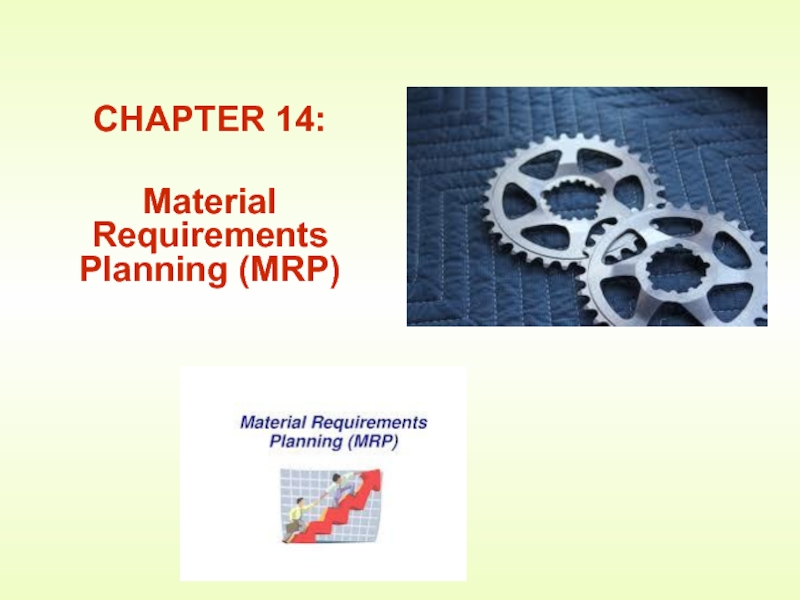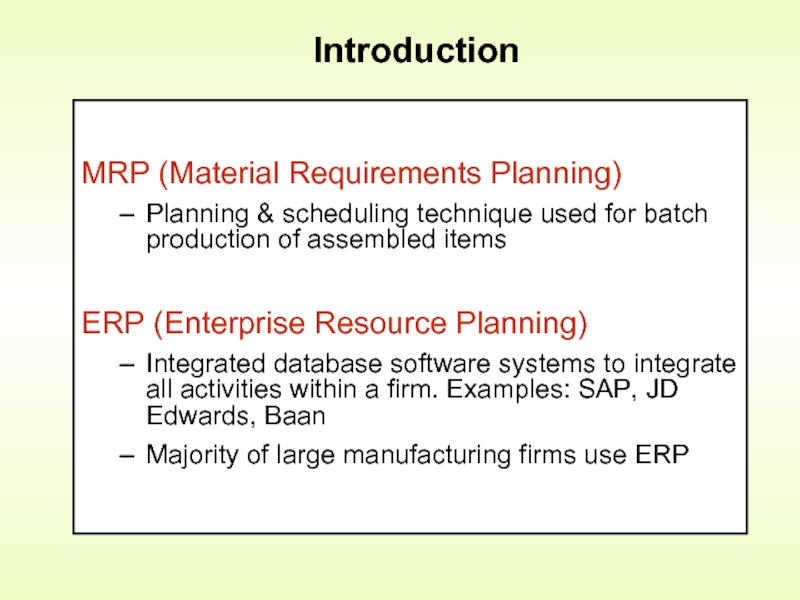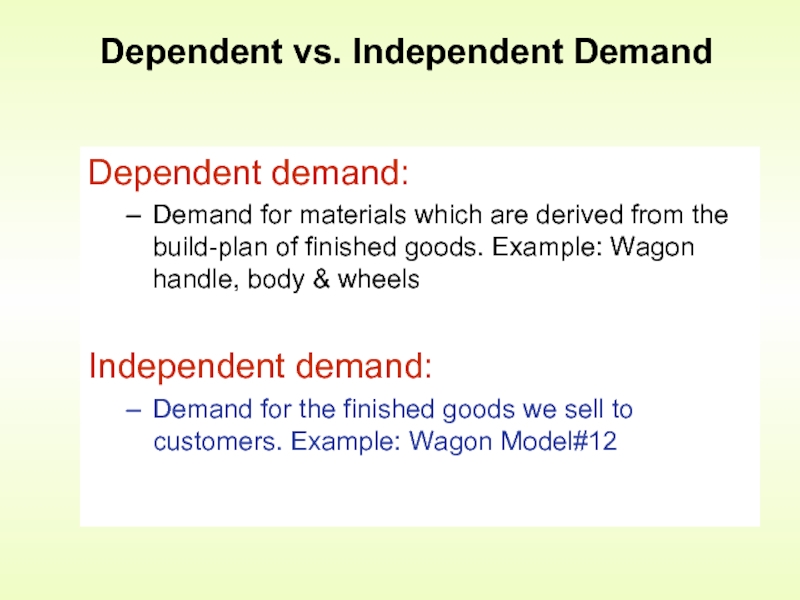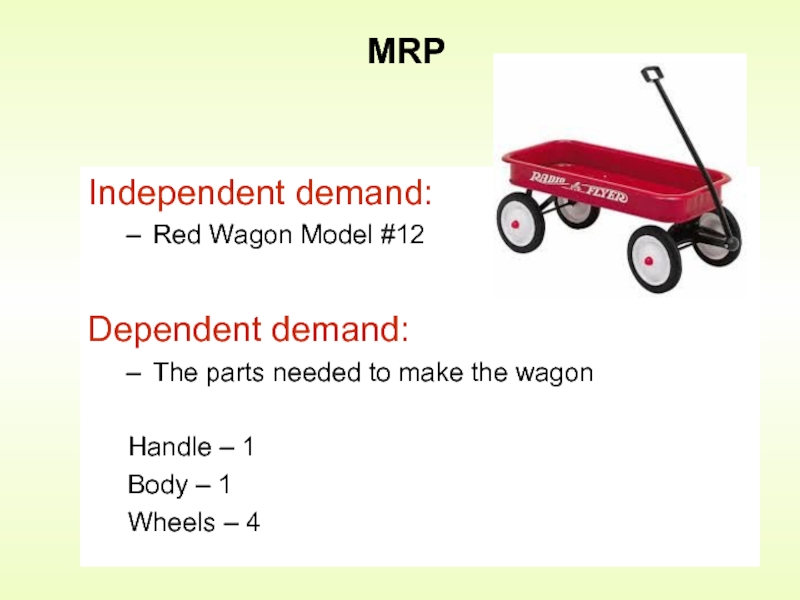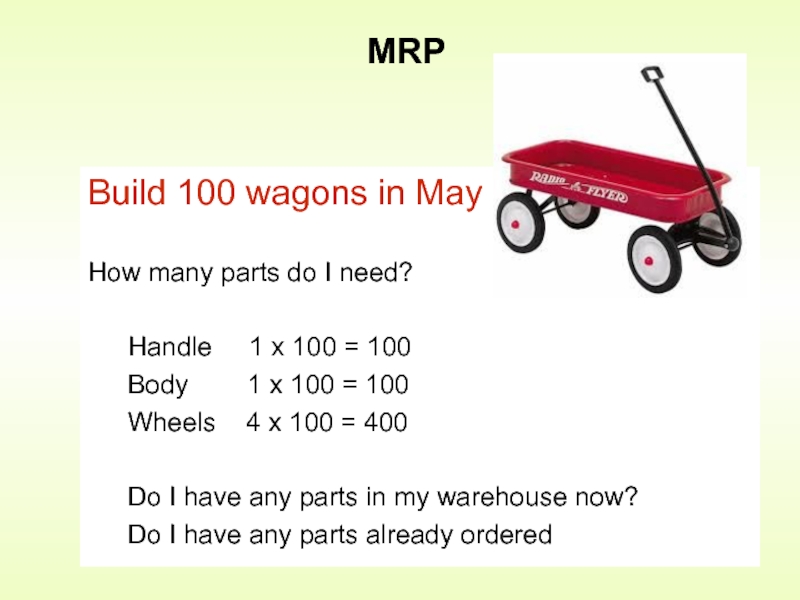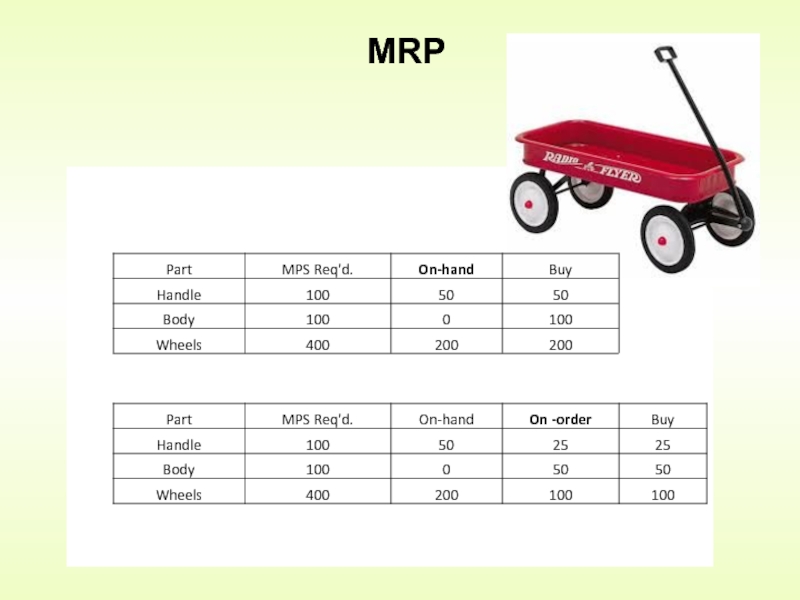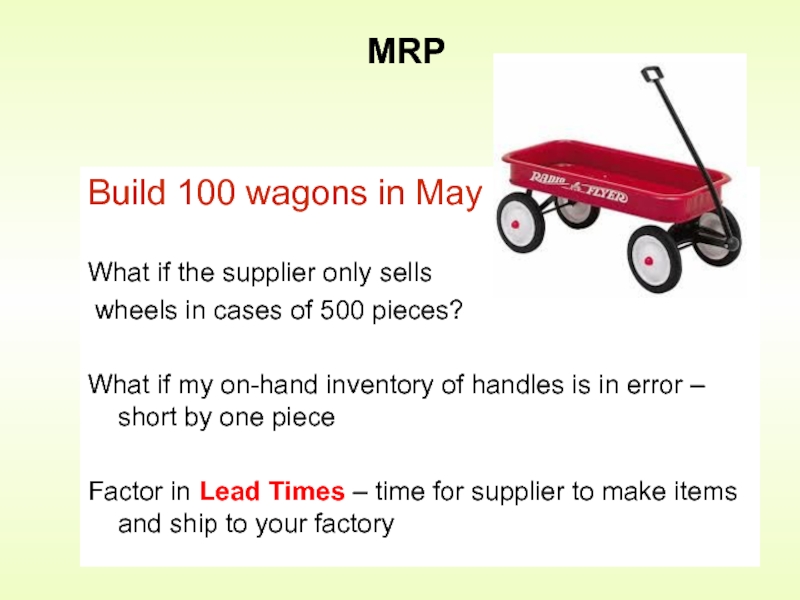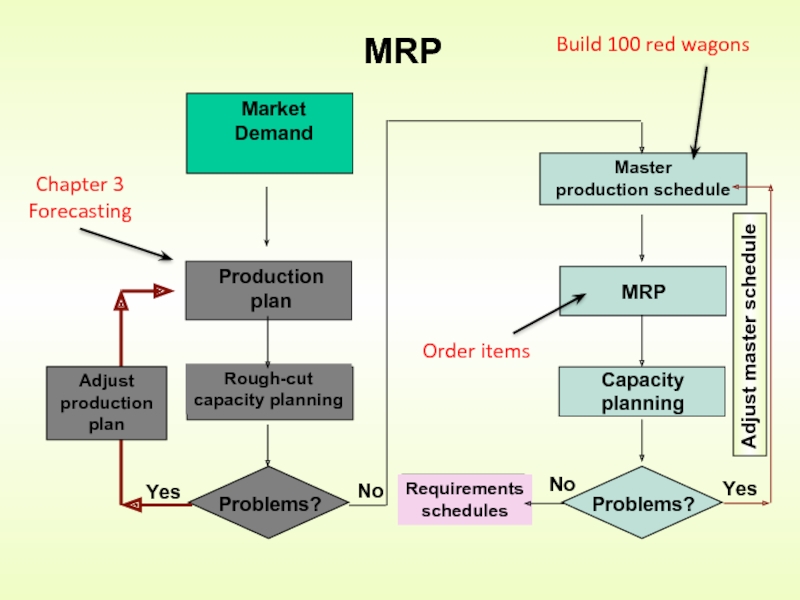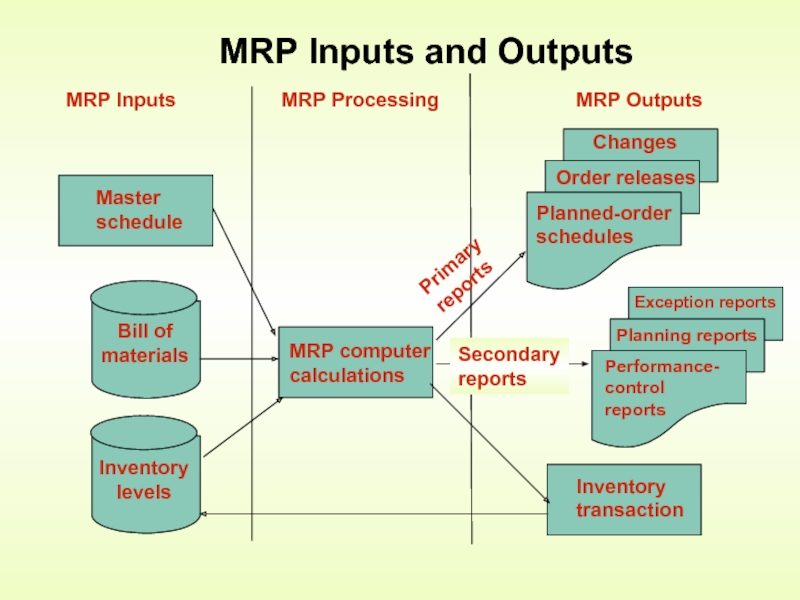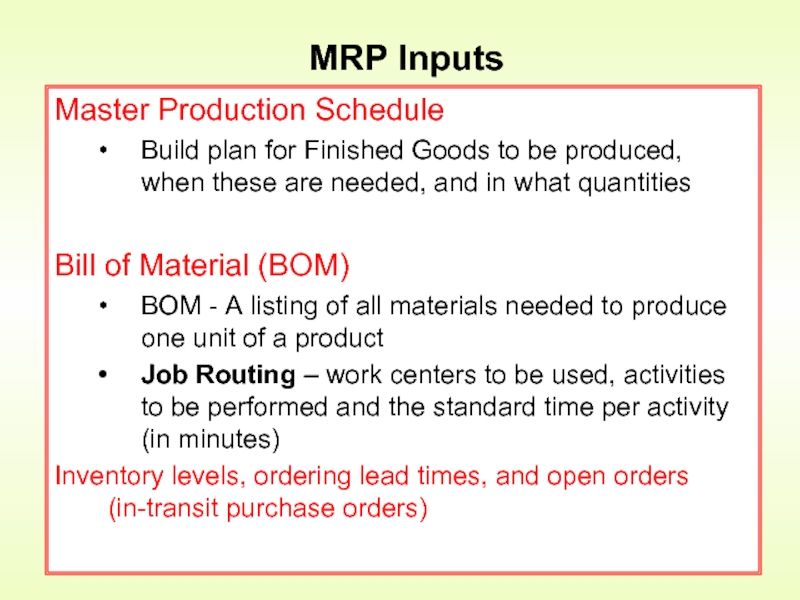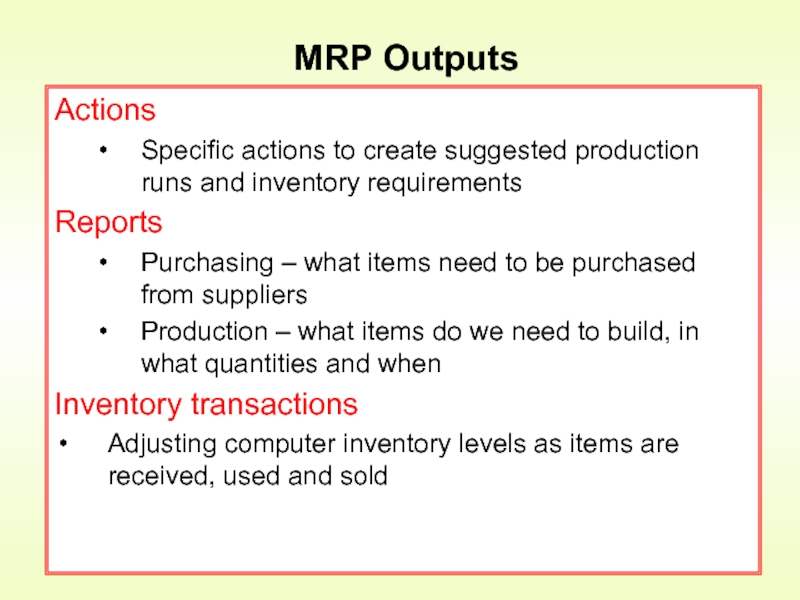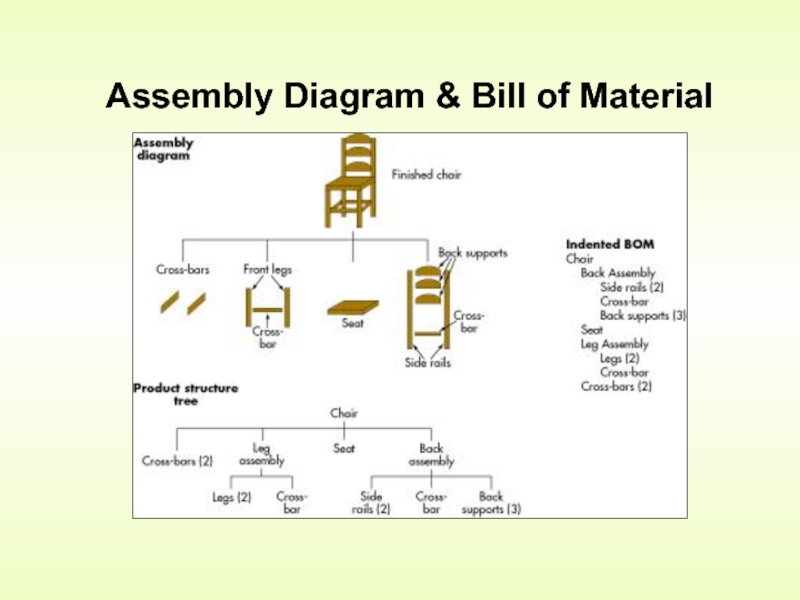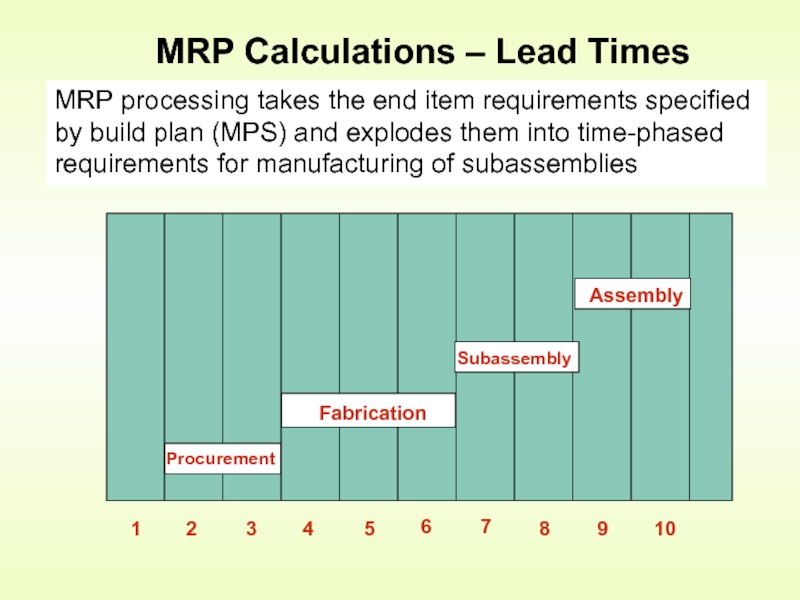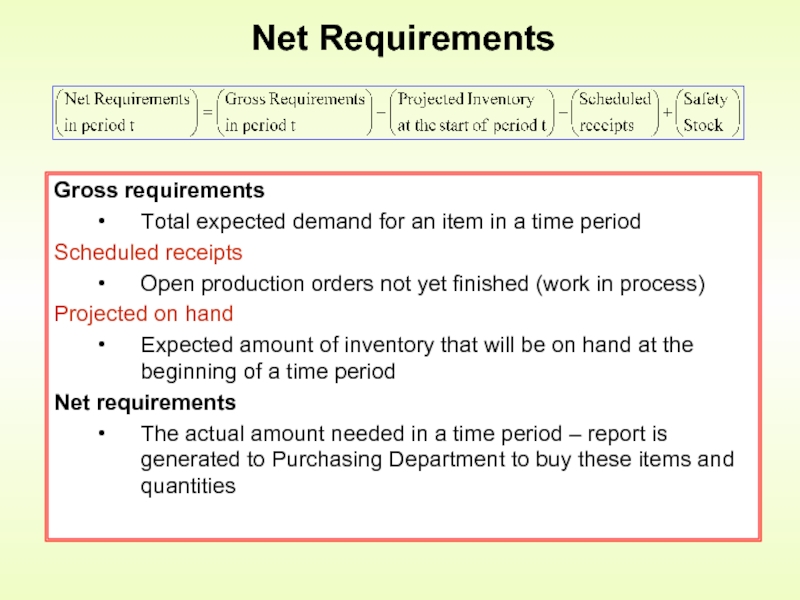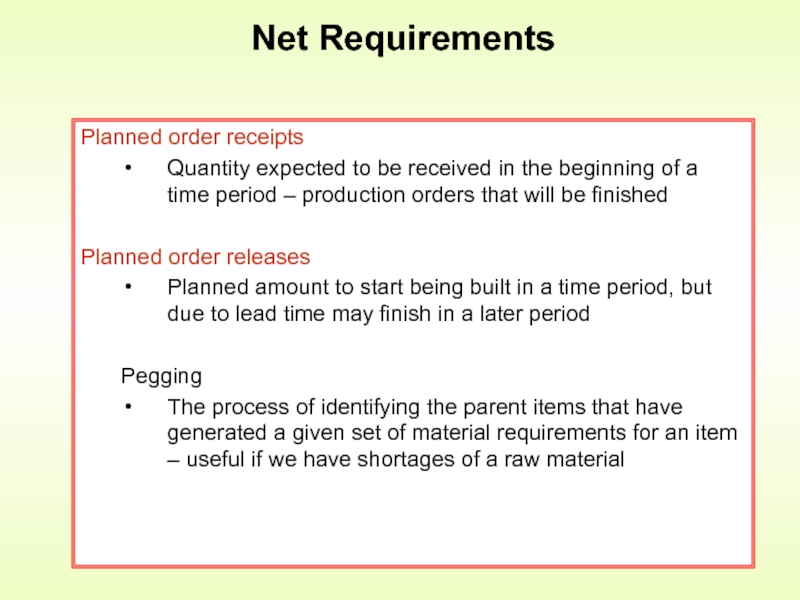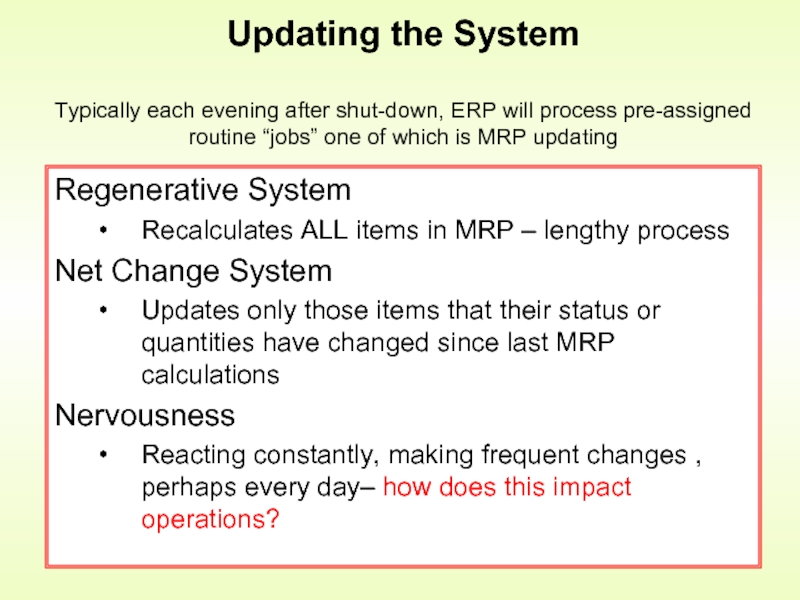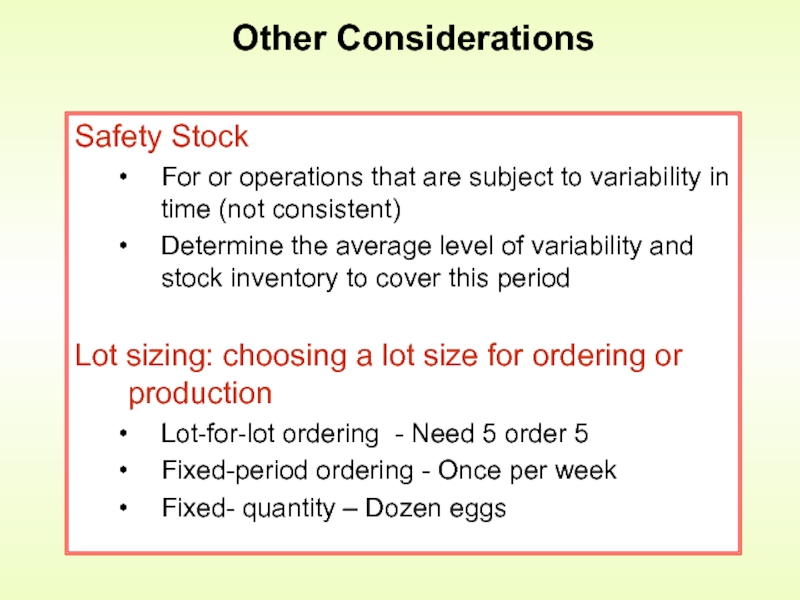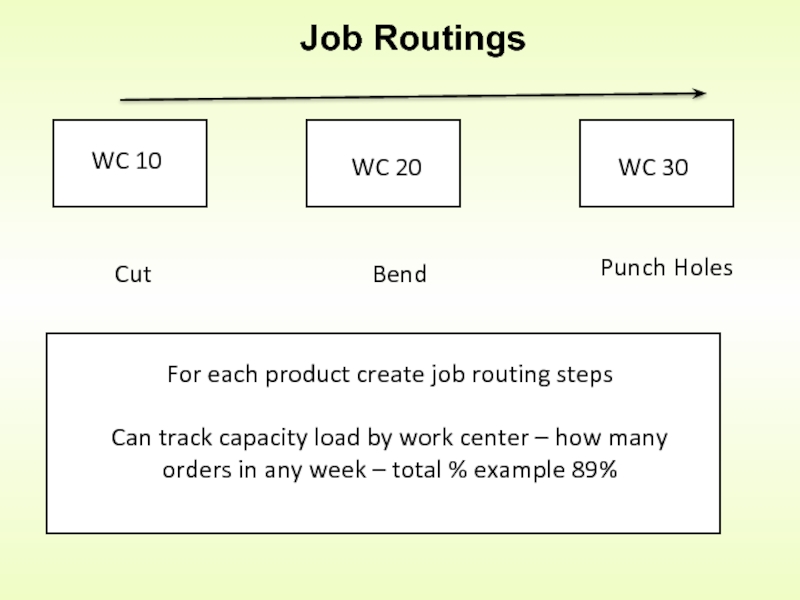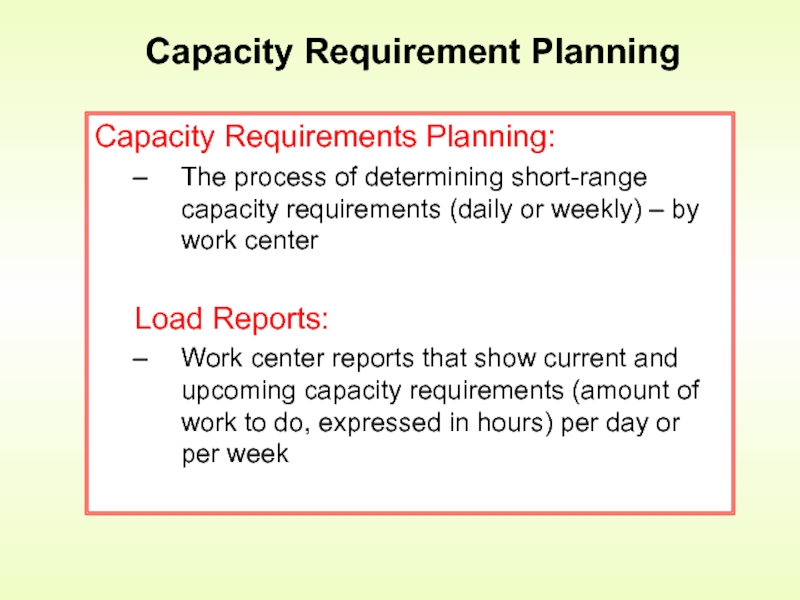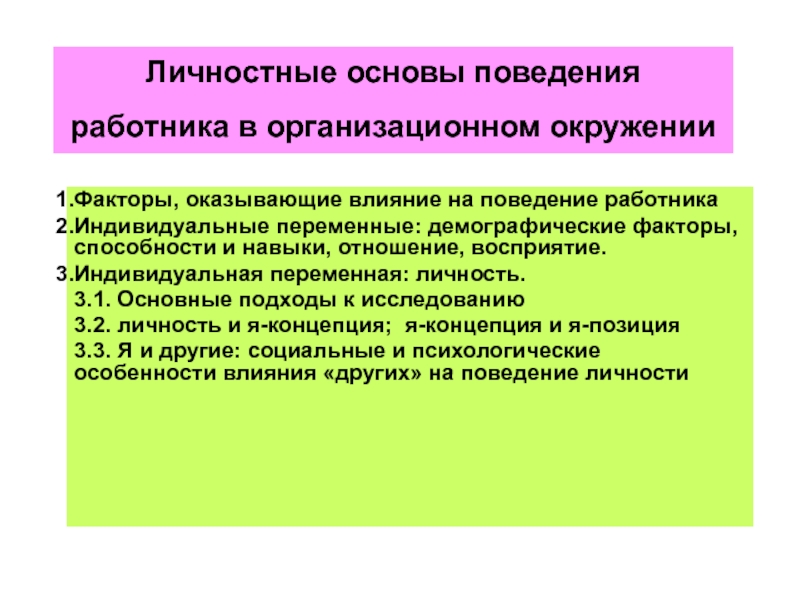- Главная
- Разное
- Дизайн
- Бизнес и предпринимательство
- Аналитика
- Образование
- Развлечения
- Красота и здоровье
- Финансы
- Государство
- Путешествия
- Спорт
- Недвижимость
- Армия
- Графика
- Культурология
- Еда и кулинария
- Лингвистика
- Английский язык
- Астрономия
- Алгебра
- Биология
- География
- Детские презентации
- Информатика
- История
- Литература
- Маркетинг
- Математика
- Медицина
- Менеджмент
- Музыка
- МХК
- Немецкий язык
- ОБЖ
- Обществознание
- Окружающий мир
- Педагогика
- Русский язык
- Технология
- Физика
- Философия
- Химия
- Шаблоны, картинки для презентаций
- Экология
- Экономика
- Юриспруденция
Material requirements planning (MRP). Chapter 14 презентация
Содержание
- 1. Material requirements planning (MRP). Chapter 14
- 2. Introduction MRP (Material Requirements Planning) Planning
- 3. Dependent demand: Demand for materials which
- 4. Independent demand: Red Wagon Model #12
- 5. Build 100 wagons in May How
- 6. MRP
- 7. Build 100 wagons in May What
- 8. MRP Build 100 red wagons Order items Chapter 3 Forecasting
- 9. MRP Inputs and Outputs
- 10. Master Production Schedule Build plan for Finished
- 11. Actions Specific actions to create suggested production
- 12. Assembly Diagram & Bill of Material
- 13. MRP Calculations – Lead Times MRP processing
- 14. Net Requirements Gross requirements Total expected demand
- 15. Net Requirements Planned order receipts Quantity expected
- 16. Regenerative System Recalculates ALL items in MRP
- 17. Other Considerations Safety Stock For or operations
- 18. Job Routings WC 10
- 19. Capacity Requirement Planning Capacity Requirements Planning:
Слайд 2Introduction
MRP (Material Requirements Planning)
Planning & scheduling technique used for batch production
ERP (Enterprise Resource Planning)
Integrated database software systems to integrate all activities within a firm. Examples: SAP, JD Edwards, Baan
Majority of large manufacturing firms use ERP
Слайд 3Dependent demand:
Demand for materials which are derived from the build-plan
Independent demand:
Demand for the finished goods we sell to customers. Example: Wagon Model#12
Dependent vs. Independent Demand
Слайд 4Independent demand:
Red Wagon Model #12
Dependent demand:
The parts needed to
Handle – 1
Body – 1
Wheels – 4
MRP
Слайд 5Build 100 wagons in May
How many parts do I need?
Handle
Body 1 x 100 = 100
Wheels 4 x 100 = 400
Do I have any parts in my warehouse now?
Do I have any parts already ordered
MRP
Слайд 7Build 100 wagons in May
What if the supplier only sells
wheels
What if my on-hand inventory of handles is in error – short by one piece
Factor in Lead Times – time for supplier to make items and ship to your factory
MRP
Слайд 10Master Production Schedule
Build plan for Finished Goods to be produced, when
Bill of Material (BOM)
BOM - A listing of all materials needed to produce one unit of a product
Job Routing – work centers to be used, activities to be performed and the standard time per activity (in minutes)
Inventory levels, ordering lead times, and open orders (in-transit purchase orders)
MRP Inputs
Слайд 11Actions
Specific actions to create suggested production runs and inventory requirements
Reports
Purchasing –
Production – what items do we need to build, in what quantities and when
Inventory transactions
Adjusting computer inventory levels as items are received, used and sold
MRP Outputs
Слайд 13MRP Calculations – Lead Times
MRP processing takes the end item requirements
Слайд 14Net Requirements
Gross requirements
Total expected demand for an item in a time
Scheduled receipts
Open production orders not yet finished (work in process)
Projected on hand
Expected amount of inventory that will be on hand at the beginning of a time period
Net requirements
The actual amount needed in a time period – report is generated to Purchasing Department to buy these items and quantities
Слайд 15Net Requirements
Planned order receipts
Quantity expected to be received in the beginning
Planned order releases
Planned amount to start being built in a time period, but due to lead time may finish in a later period
Pegging
The process of identifying the parent items that have generated a given set of material requirements for an item – useful if we have shortages of a raw material
Слайд 16Regenerative System
Recalculates ALL items in MRP – lengthy process
Net Change
Updates only those items that their status or quantities have changed since last MRP calculations
Nervousness
Reacting constantly, making frequent changes , perhaps every day– how does this impact operations?
Updating the System
Typically each evening after shut-down, ERP will process pre-assigned routine “jobs” one of which is MRP updating
Слайд 17Other Considerations
Safety Stock
For or operations that are subject to variability in
Determine the average level of variability and stock inventory to cover this period
Lot sizing: choosing a lot size for ordering or production
Lot-for-lot ordering - Need 5 order 5
Fixed-period ordering - Once per week
Fixed- quantity – Dozen eggs
Слайд 18Job Routings
WC 10
WC 20
WC 30
Cut
Bend
Punch Holes
For each product create job routing
Can track capacity load by work center – how many orders in any week – total % example 89%
Слайд 19Capacity Requirement Planning
Capacity Requirements Planning:
The process of determining short-range capacity
Load Reports:
Work center reports that show current and upcoming capacity requirements (amount of work to do, expressed in hours) per day or per week
